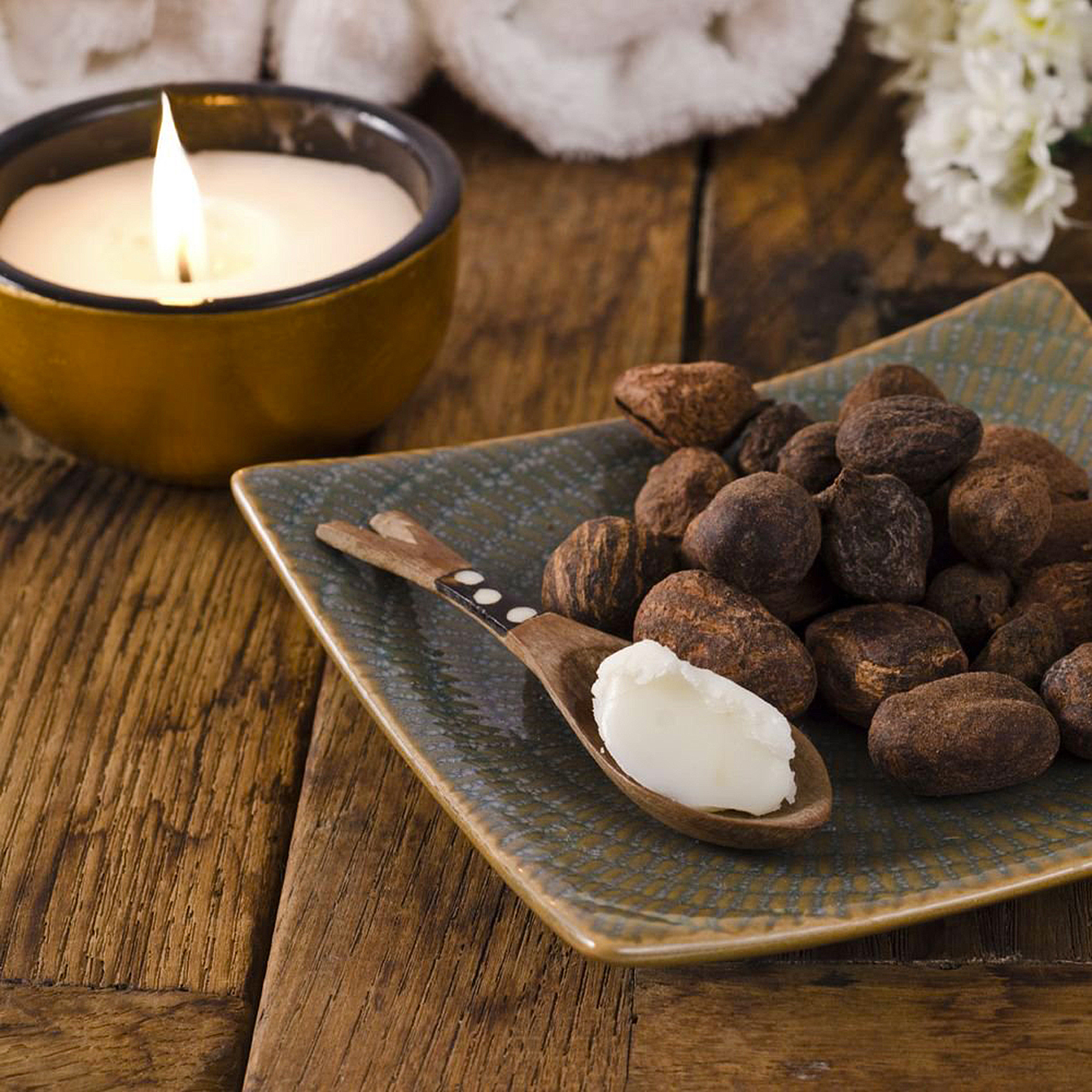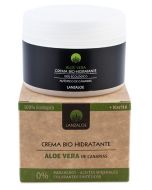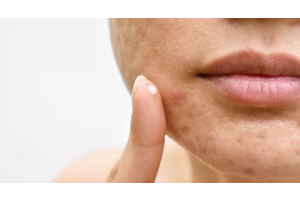Local Storage seems to be disabled in your browser.
For the best experience on our site, be sure to turn on Local Storage in your browser.
The Shea and its benefits

Shea is a natural product born from Butyrospermum parkii, a savanna tree that grows in central and western Africa, in countries such as Nigeria, Senegal or Burkina Faso.
The fruits produced by this tree look like nuts with white and naturally fatty almonds hide inside. When these almonds are manipulated they turn into a yellowish dough: shea butter. Each year, a tree produces an average of twenty kilos of dough.
Properties
It contains antioxidants such as tocopherols (vitamin E) and catechins (which are also found in green tea). Other specific compounds such as triterpenic alcohols have been detected, whose property is to reduce inflammation; esters of cinnamic acids, which have a limited ability to absorb ultraviolet (UV) radiation, and lupeol, which prevents the effects of skin aging by inhibiting enzymes that degrade skin proteins. Shea butter also protects the skin by stimulating the production of structural proteins by specialized dermal cells.
This fat is known above all for its moisturizing properties so it is used in the composition of numerous preparations of the cosmetic industry such as the Bio-Moisturizing Cream, which in addition to Shea contains all the properties of Aloe vera.
Shea Butter throughout history
Africans, since ancient times, cook pulp and shell, according to traditional recipes from each region. Shea butter fat, which comes from the seed, is a condiment, like our butter or margarine, used in sauces and fried foods.
Proof of this is that it has been mentioned in numerous African documents throughout its history and it was also very appreciated by Cleopatra, and it was already told, that in Egypt came caravans full of vessels with shea butter for the care of their skin and even the tombs of some kings were carved with the wood of the tree that gives rise to the butter and meaning to its name, the shea or Vitellaria paradoxa that means butter, being evident from these details that the shea butter has been a fundamental pillar of African pharmacology.
In Europe, the fruit of the Shea tree is used for the composition of many cosmetic preparations, as this butter is very rich in vitamins and nutrients, having many properties already mentioned.
The benefits of shea butter for the skin
During pregnancy the appearance of stretch marks is very common, especially in the abdomen and waist as a result of the increase in volume due to the growth and development of the baby. It is also common that they arise in the chest due to the growth that the breasts suffer when they are prepared for the production of breast milk.
Shea butter is very useful in preventing stretch marks both during pregnancy and while breastfeeding.
Shea butter helps soften and repair the skin, making it an excellent natural option when it comes to reducing and treating cracks that appear on the skin. And how does it help? Returning elasticity to dry skin.
Therefore, it also acts as a wonderful natural moisturizer, avoiding dehydration by minimizing water leaving the skin while preserving it.
If you have sensitive skin it is quite likely that you have already noticed that not all cosmetics and products - even if they are natural - make your skin feel good. Surprisingly, shea butter is useful for very delicate skin, providing excellent moisturizing quality of both the skin of the face and body.
It stands out for its very high vitamin F content, which becomes a certainly vital component of cell membranes.
Because of its high content of essential nutrients, shea butter helps prevent and treat skin aging, especially when that aging is premature, thanks to the fact that it stimulates the metabolism of skin cells preventing the appearance of wrinkles.
Since shea butter is useful and beneficial for dry skin it also becomes an excellent natural solution to moisturize dry lips, especially when this dryness has been caused by cold.
Although traditionally shea butter has been used on the skin for its different qualities, did you know that it is also useful for hair and scalp? It helps protect hair from sun damage by exerting a protective effect.
But its benefits do not end here, since it regenerates the hair by restoring the hair structure, giving it shine, volume and a wonderful softness.
In addition to the benefits mentioned in the previous lines, it also provides the following properties:
- Solar erythemas: helps protect the skin against solar erythemas, which consist of inflammation of the skin that causes the appearance of red spots.
- Healing: acts as a healing of wounds, especially when they are small and not deep.
- Dry and cracked hands: it can act in a very beneficial way as a hand cream, being ideal to treat cracks in the hands and also dry skin.


